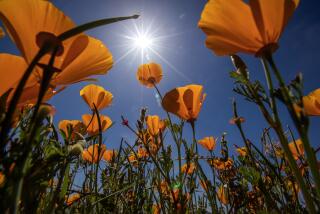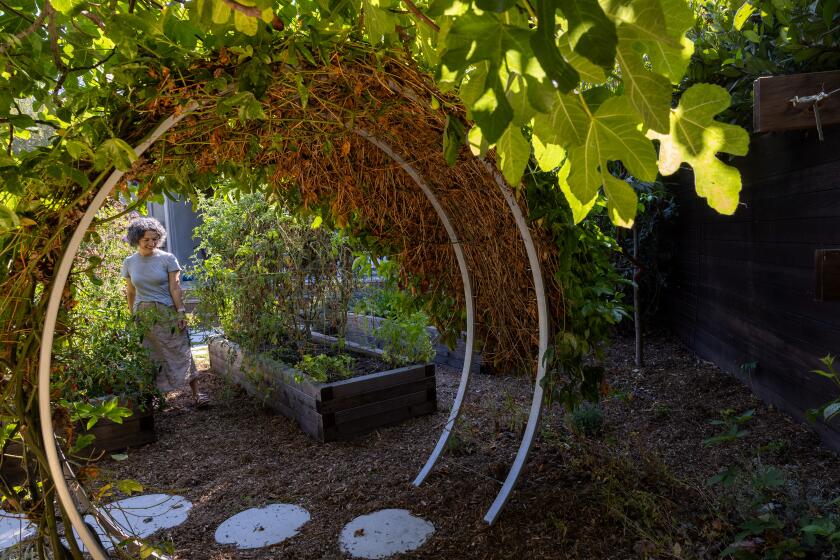If You’re Going to Plant ‘Em, Do It by Early November
Fall is a good time to plant almost anything in California. But late October/early November is the only time to plant most bulbs, according to Cristin Fusano of Roger’s Gardens in Corona del Mar.
“The soil is still warm enough for the root system to develop, but the days are getting shorter so the bulbs won’t put out foliage before you want them to,” she says.
Next to planting them at the right time, the most critical factor in success with bulbs, she says, is providing a loose, fast-draining soil. Amend existing soil with potting soil or compost to a depth of 12 inches to 16 inches, depending on the size of the bulb.
In general, the bigger the bulb, the deeper it is planted and the more soil you’ll have to amend.
Plant bulbs, point up, at the depth recommended by the bulb grower and cover with topsoil. Anemones are an exception. They are planted toes down.
To help bulbs take root quickly, Fusano likes to add a light low-nitrogen fertilizer (about 9-9-6) to the topsoil.
Other gardeners, such as Phil Berneking of Davids & Royston Bulb Co., a supplier to nurseries, prefer sprinkling the fertilizer in the amended soil just beneath the bulb.
Once planted, water the bulbs thoroughly.
“Back and forth, back and forth; really saturate them,” Fusano says. “After that, water the top two inches or so about once a week until foliage starts coming up. Then water deeply once a week until the plant stops flowering and the foliage begins to fade.”
Once it does, start tapering off watering, she says, and then stop completely.
“The plant will look horrible,” Fusano says, “but if you want to get flowers from it the next year, you have to let it go through this dying-off stage. The leaves are gathering food for next year’s flowers.
“If you’re going to replace the bulbs, you can dig them up as soon as the plant stops flowering.”
Gardeners have come up with various tricks for disguising disintegrating bulb foliage. Mary Rouse of Corona del Mar twists the yellowing leaves together, securing them with a rubber band if necessary, then slides them out of sight under the ground cover the leaves emerged from.
English ivy is the predominant ground cover in her yard, but ajuga, violets, vinca minor and candytuft would all make good choices--as would anything that is no more than half the height of the bulb flower. Rouse also tucks the foliage beneath adjoining shrubs.
Planting perennials with bulbs is another way to manage the problem. Foxglove and larkspur emerge to hide the dying foliage of ranunculus and anemones at Joyce Spiller’s Costa Mesa garden. And Beverly Schmidt of Fullerton uses rudbeckia to hide dying daffodils.
And she counts on the eye’s tendency to focus on the prettiest thing in sight.
“Many of my bulbs are tucked in dry corners near my roses, which are on drip irrigation,” she says. “When the roses don’t look very good, the bulbs are blooming and your eye is drawn to them. Then about the time the bulbs are going down, the roses are blooming, so you hardly notice the brown foliage of the bulbs.”
If you treat bulbs as annuals, you’ll have another problem--a bare patch of dirt until their foliage emerges. One way to solve this problem is to plant other annuals directly over the bulbs. Berneking uses this technique in his own garden--planting snapdragons, pansies and primroses over daffodils, tulips and Dutch iris. He will be discussing the technique of over planting in more detail at Sherman Gardens in Corona del Mar today at 9:30 a.m.






